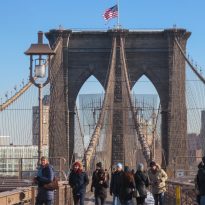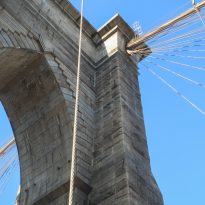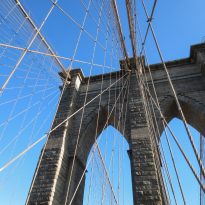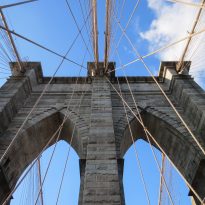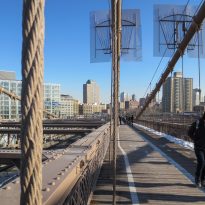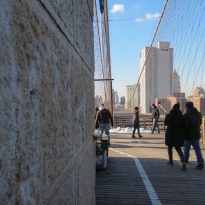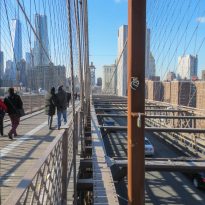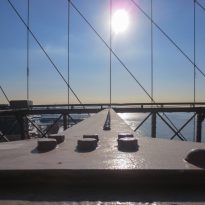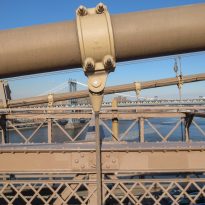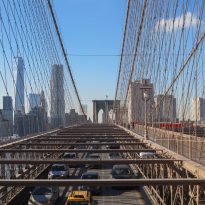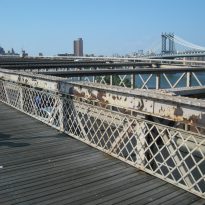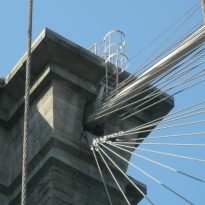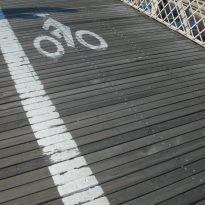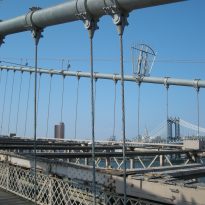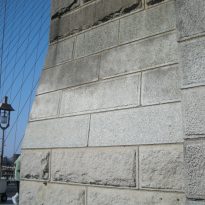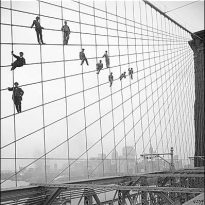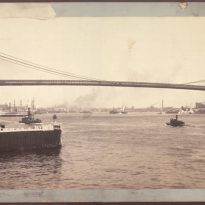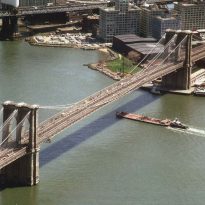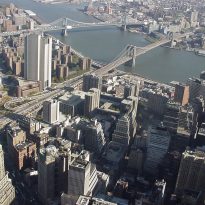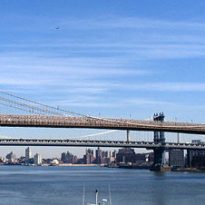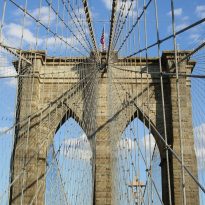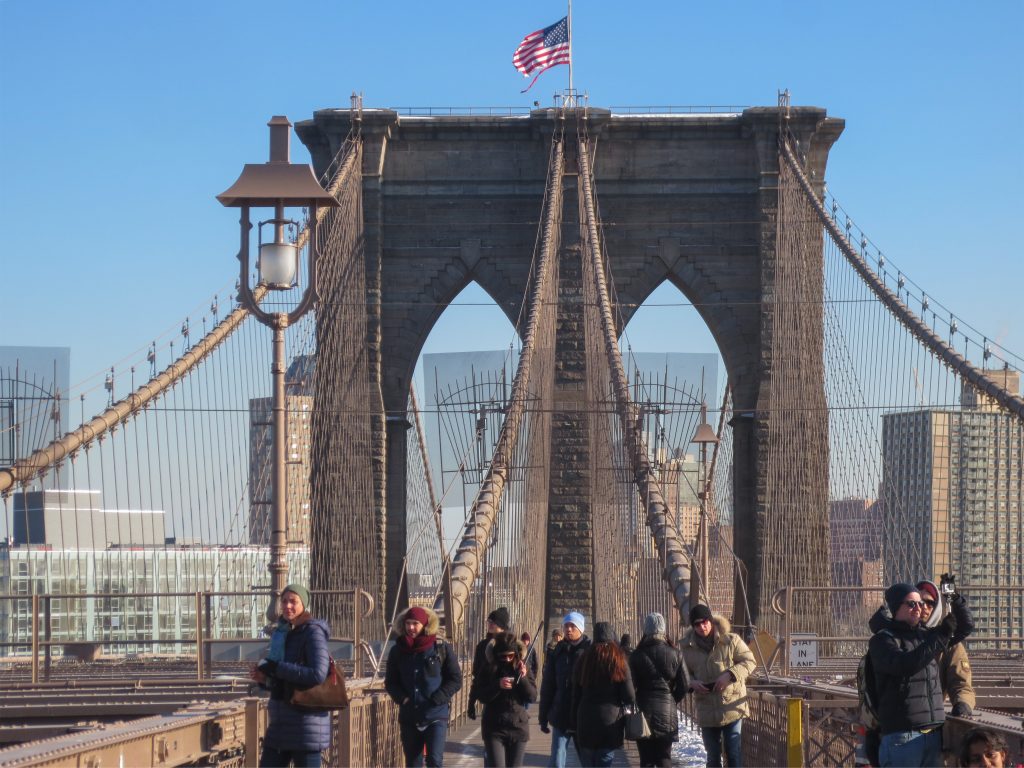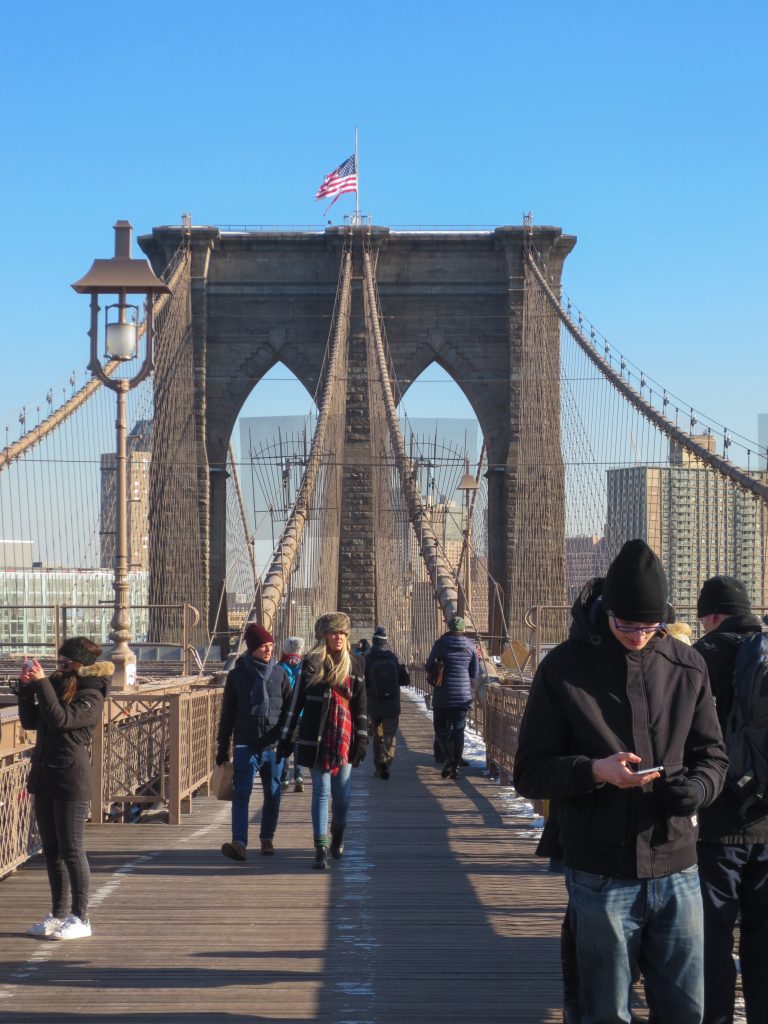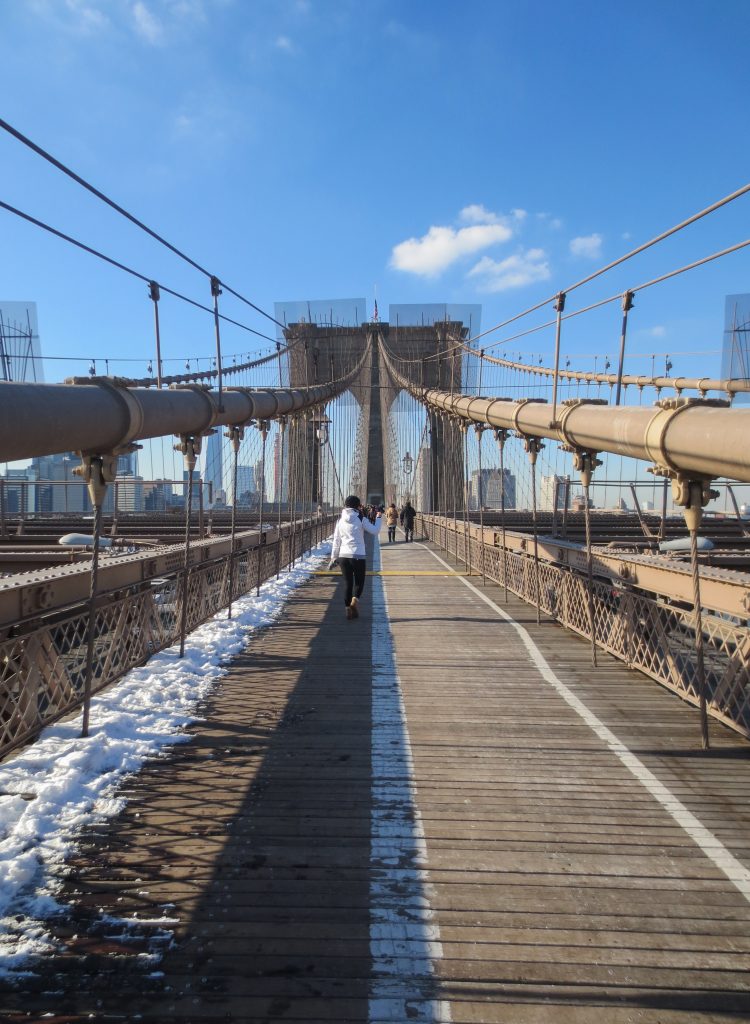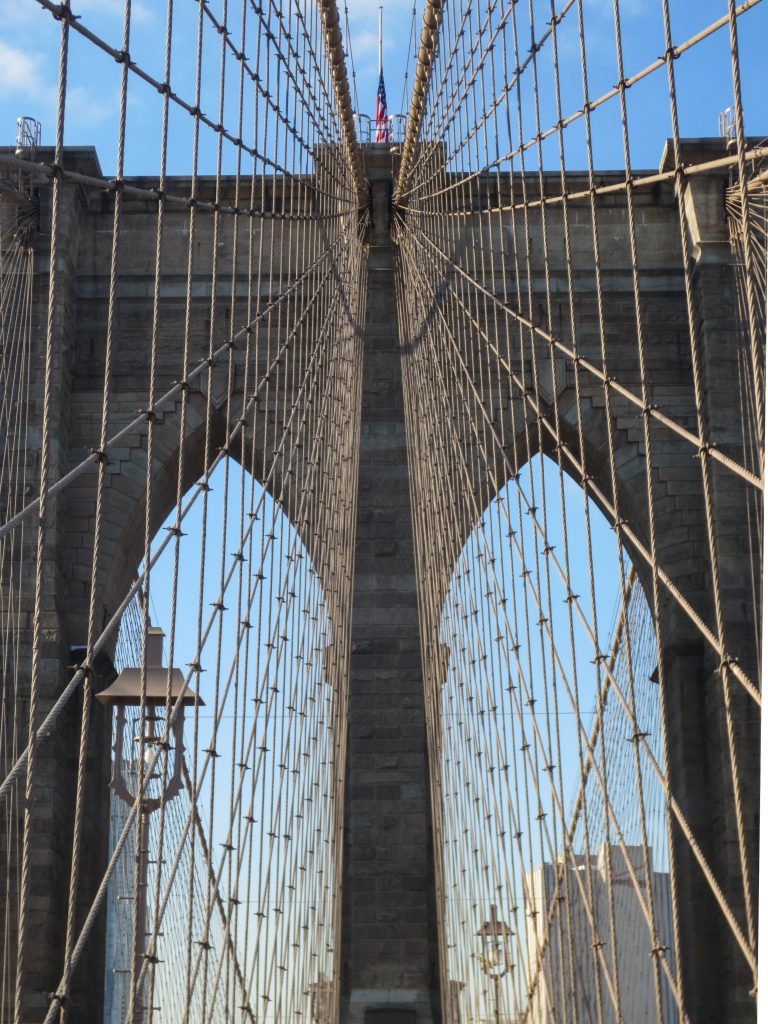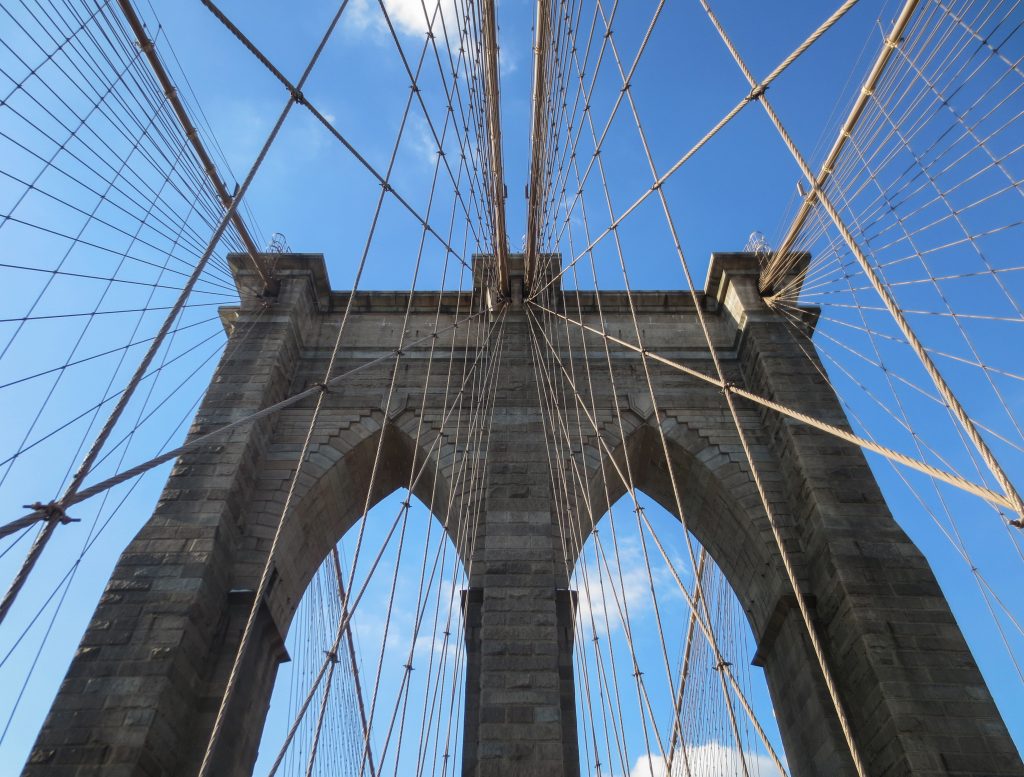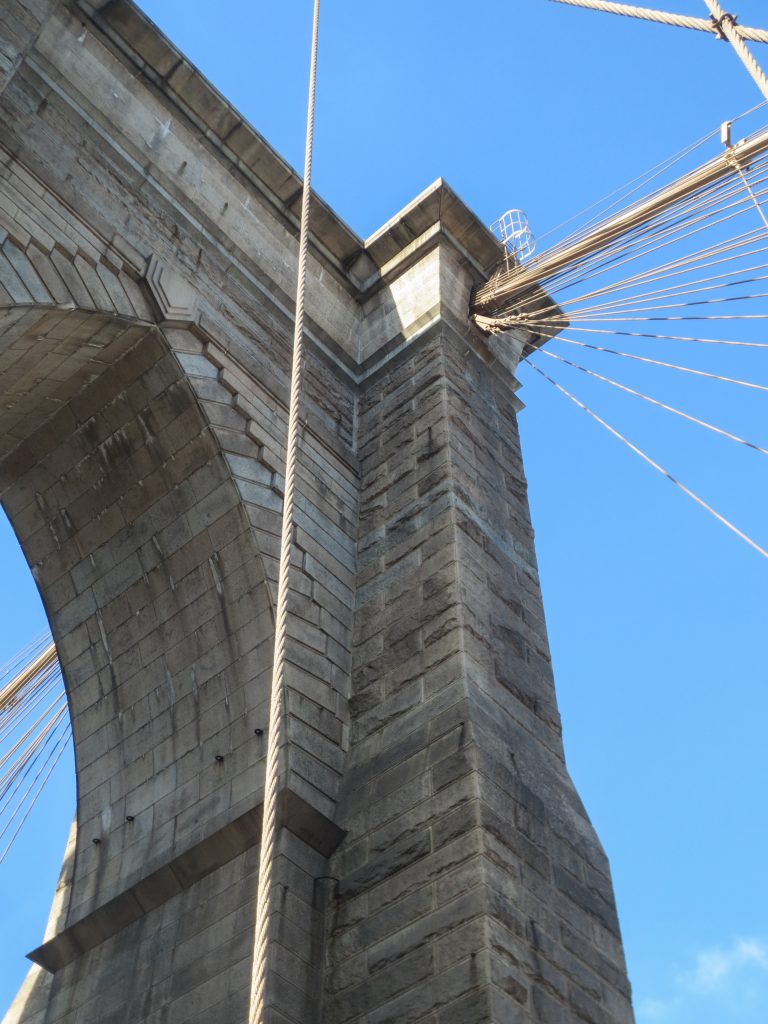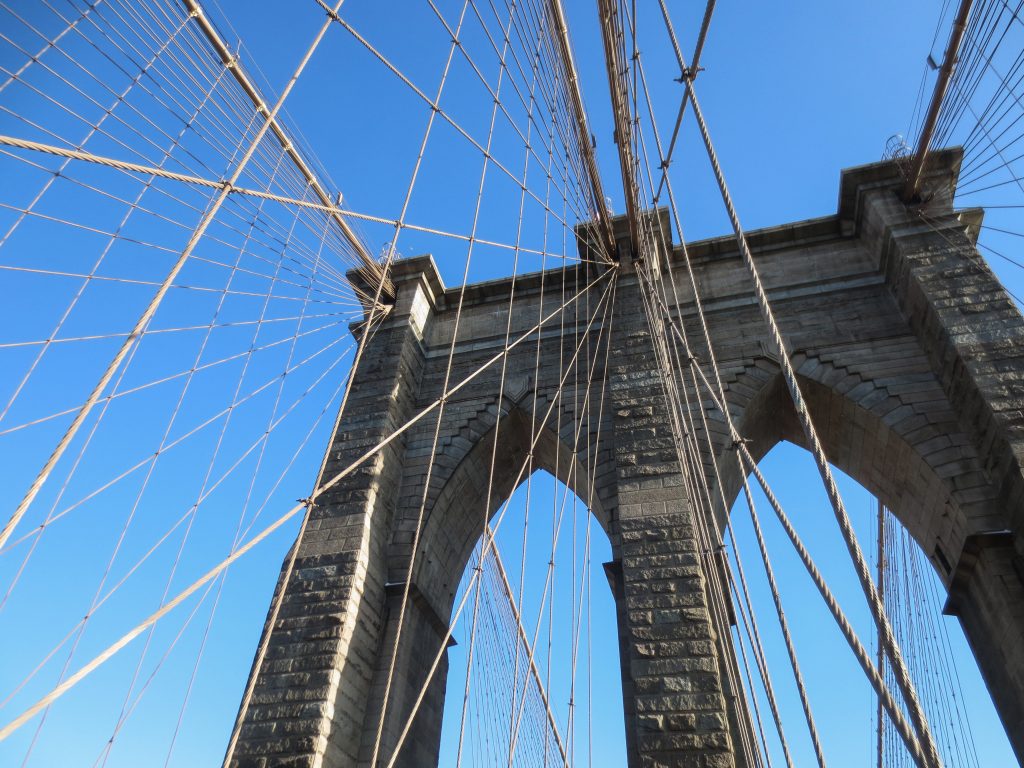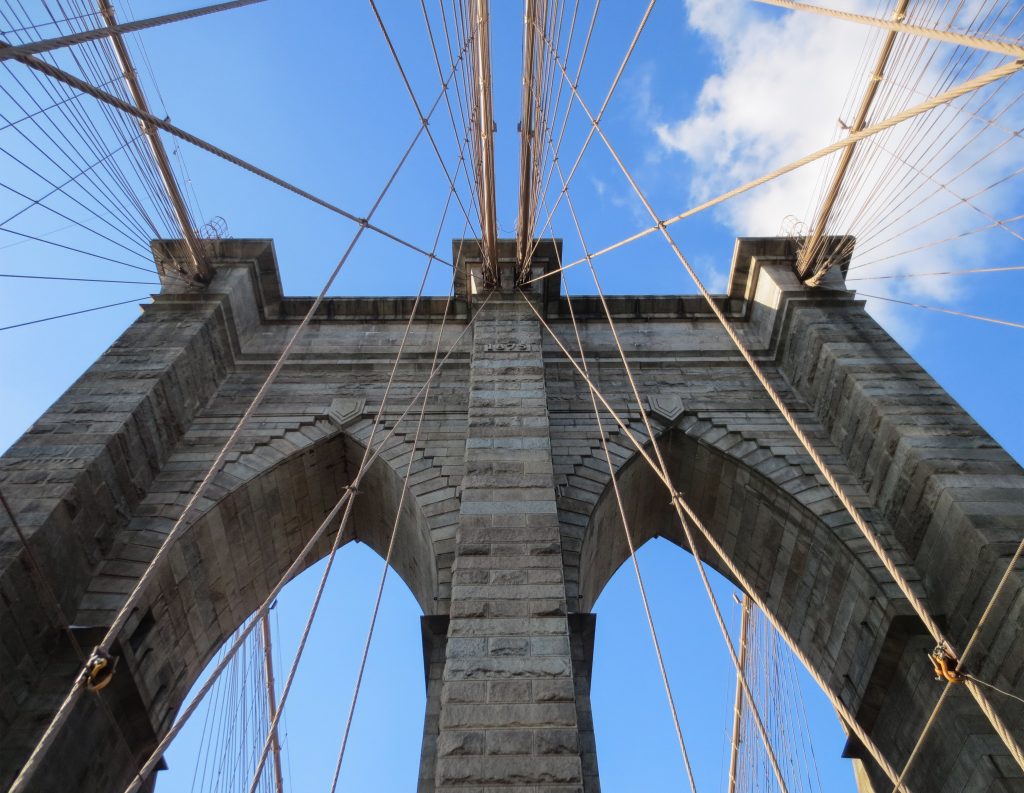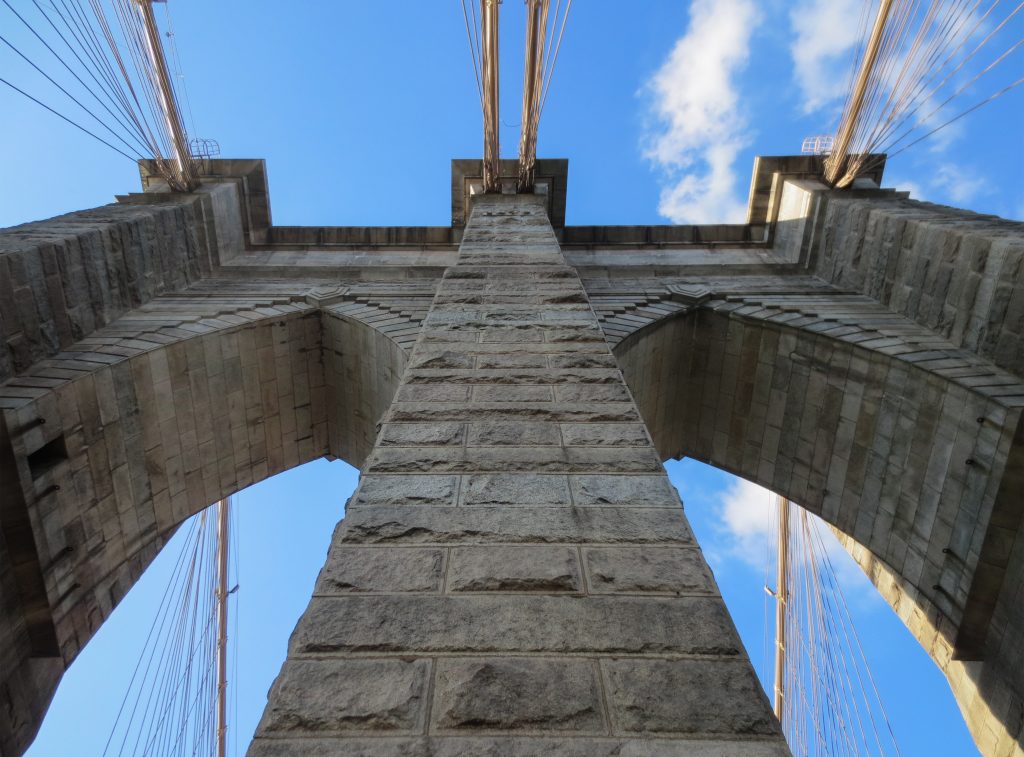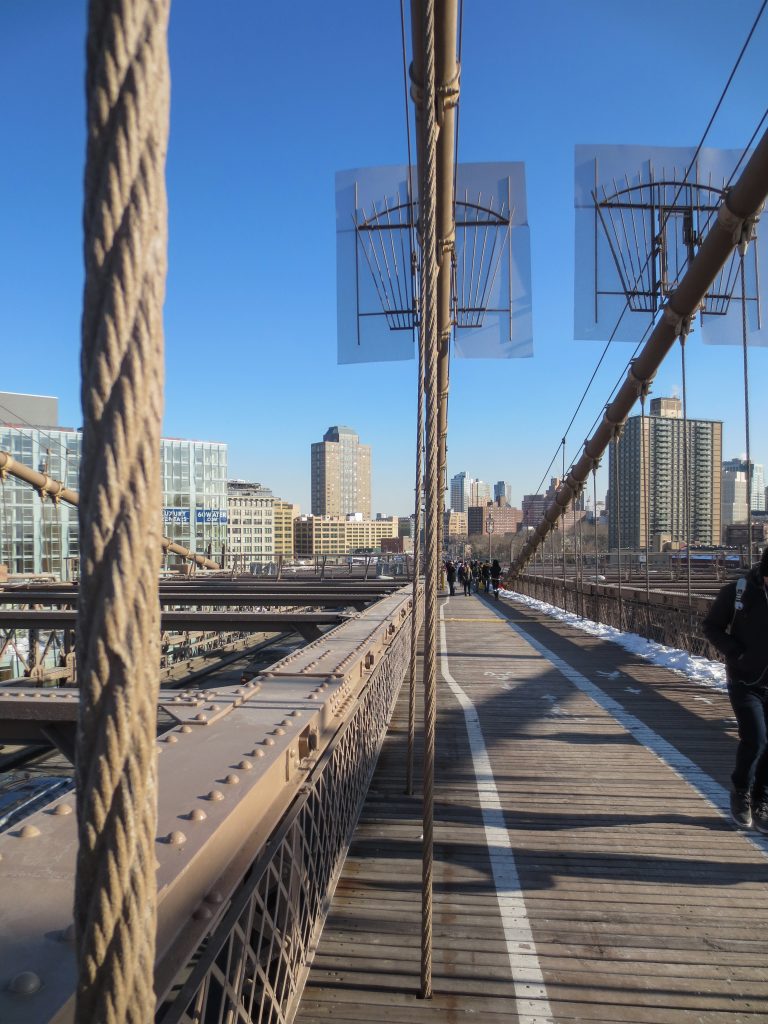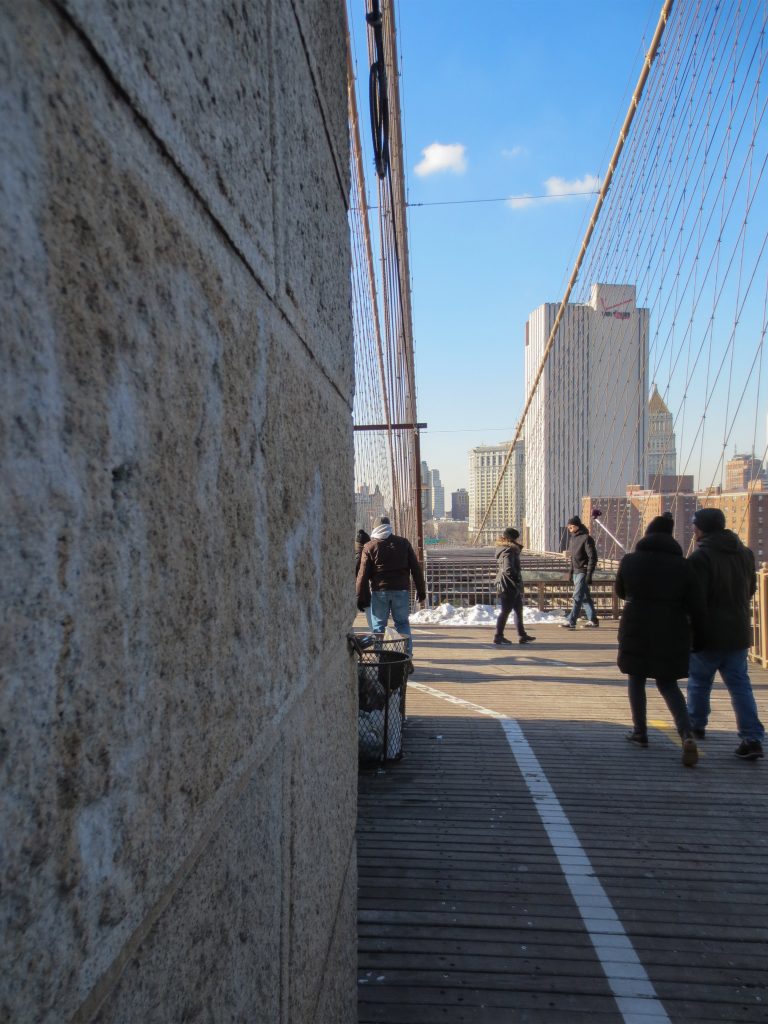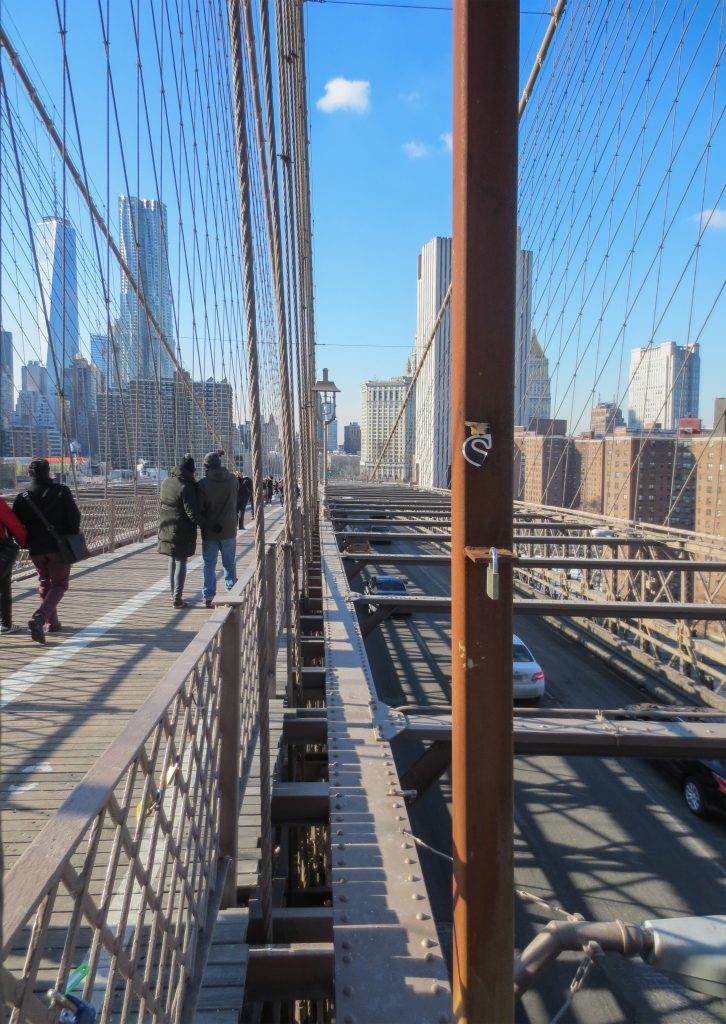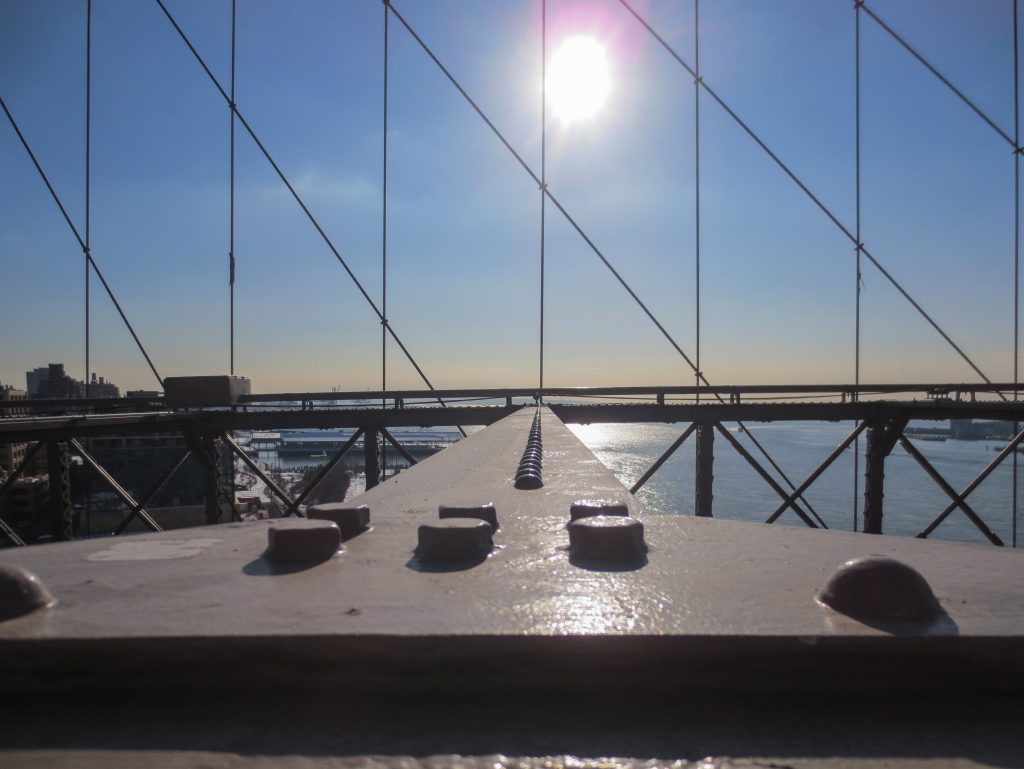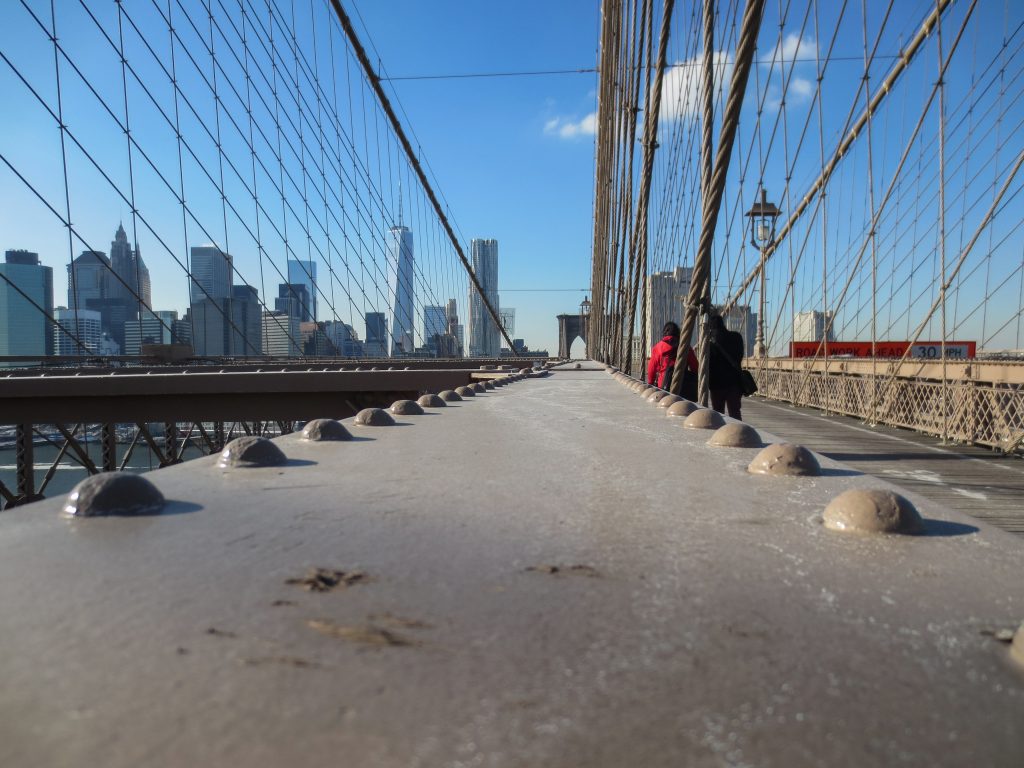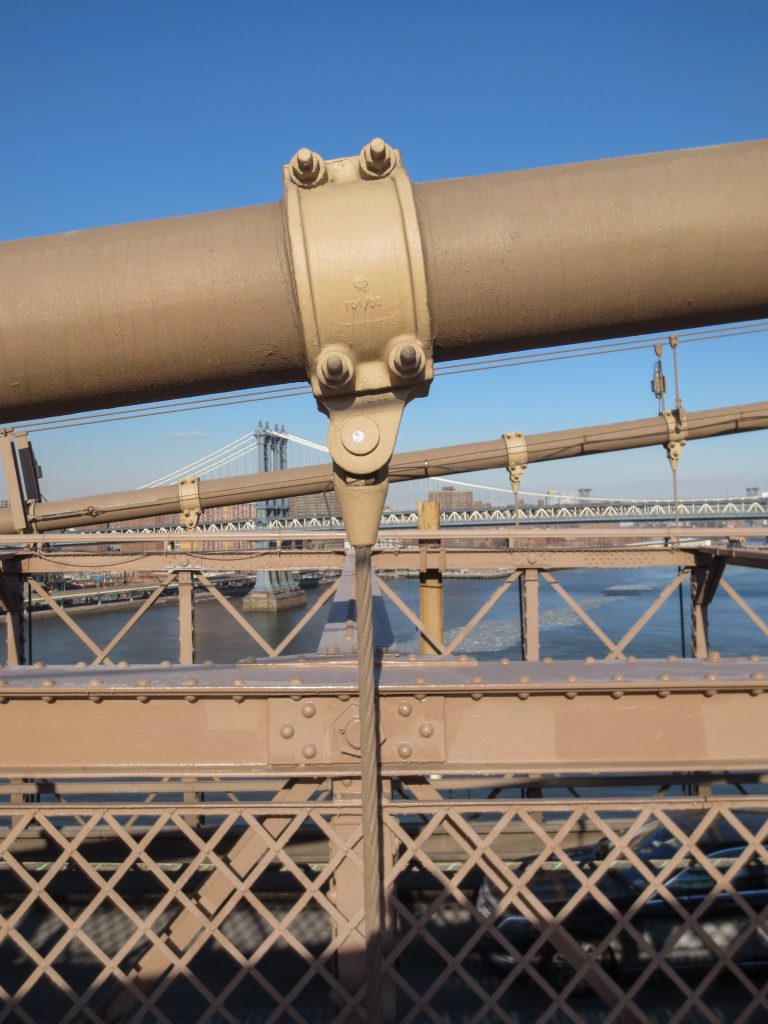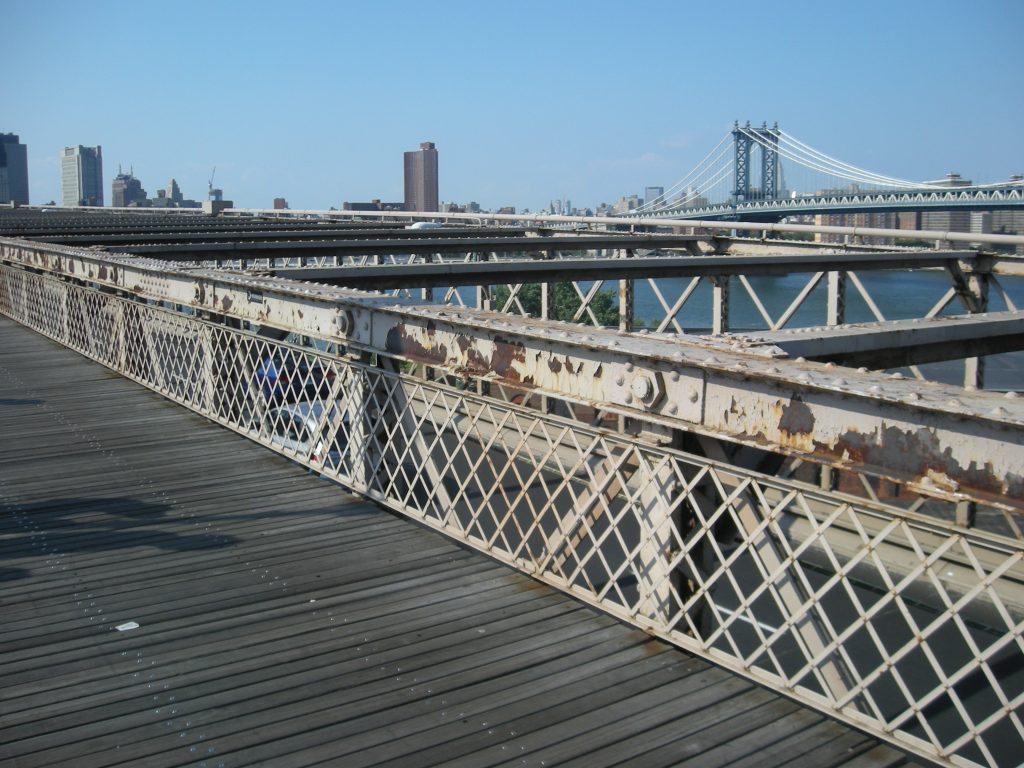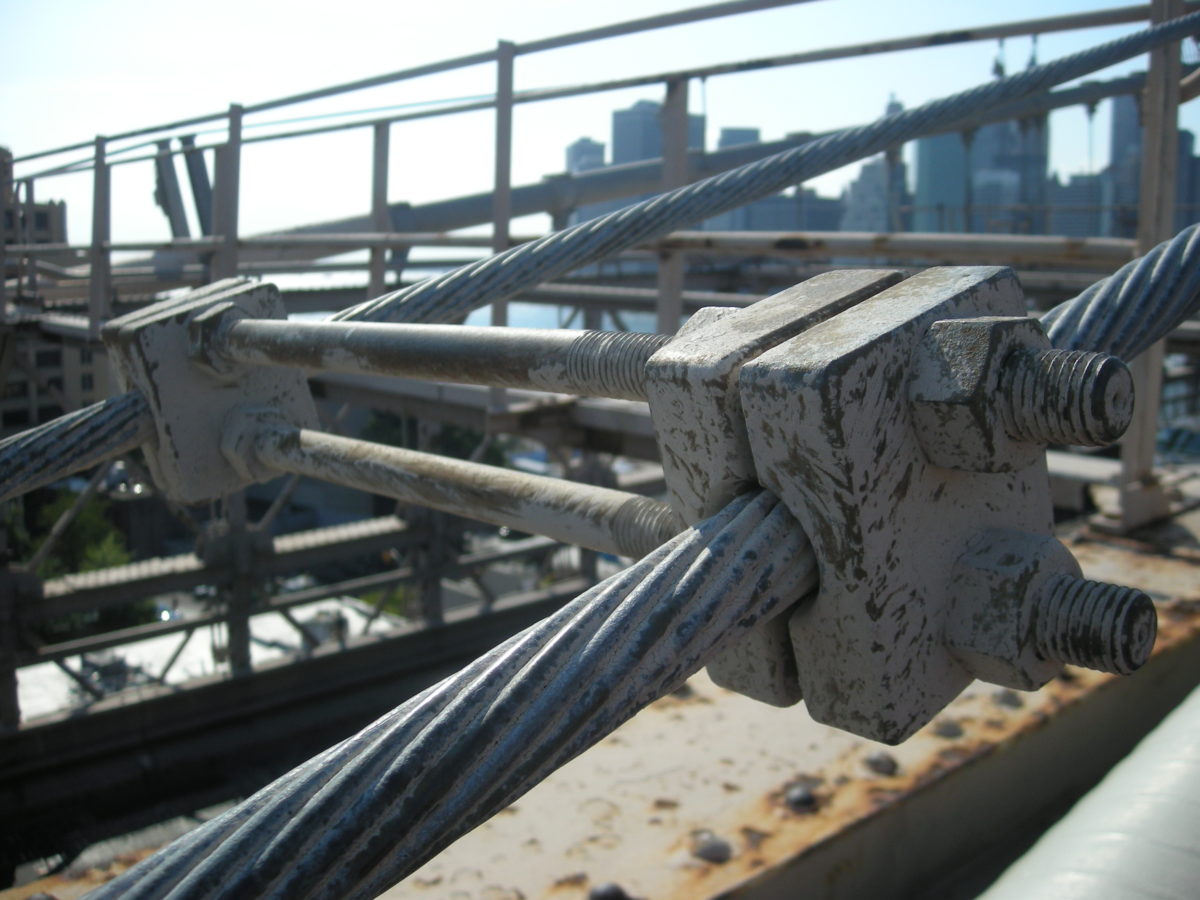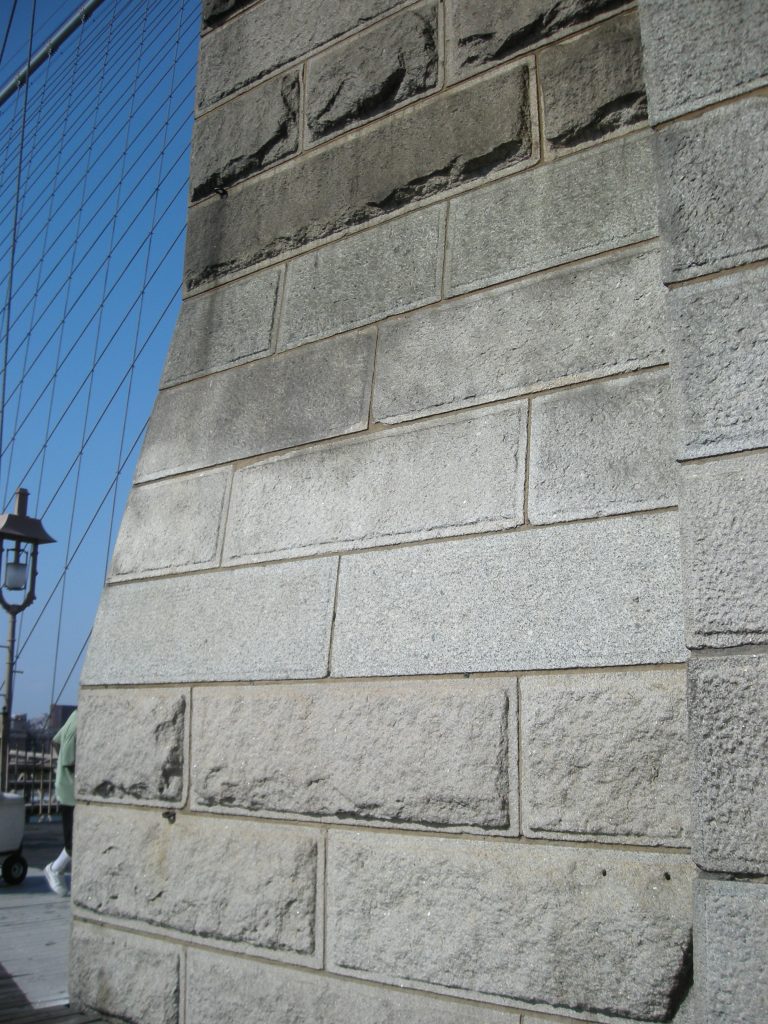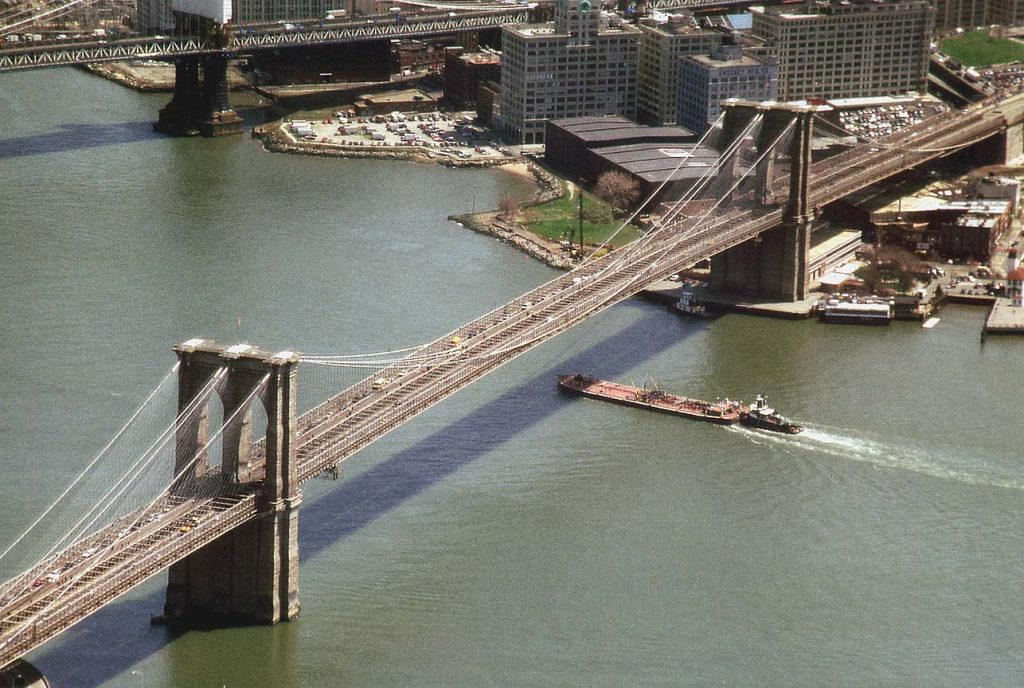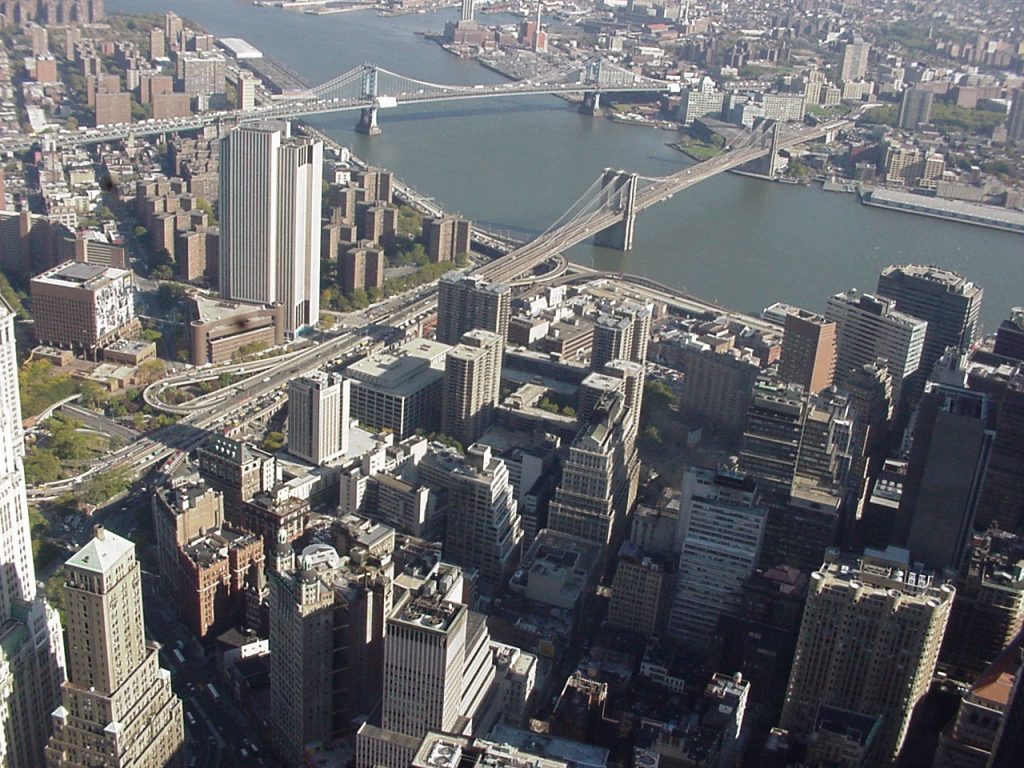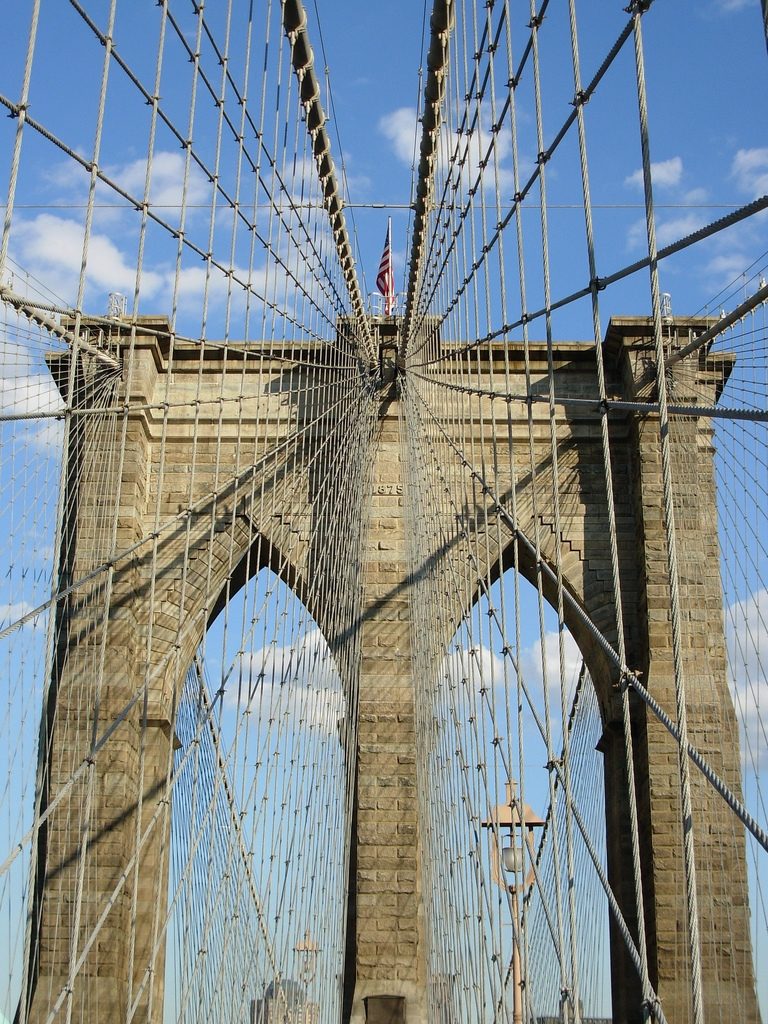Brooklyn Bridge

Introduction
The Brooklyn Bridge is a bridge that crosses the East River, is a symbol of New York City that also marked a milestone in history to use for the first time in this type of construction steel and being over 20 years the longest suspension bridge in the world.
When in 1852, the engineer and owner of a metallurgical company named John Augustus Roebling could not come to Brooklyn to Atlantic Avenue-Fulton Ferry Street due to ice on the river, he devised the solution with the construction of a bridge. Three years later he had developed the project to which he would call as a great work of art.
The idea of Roebling was met with enthusiasm by the rulers of Manhattan and Brooklyn, then separate cities, but the financial support found in William C. Kingsley that, because of their political influence, pushed for a private company could build and manage building a bridge that would link the two cities. In 1867, he founded the New York Bridge Company would be in charge of managing public funds in the cities of New York and Brooklyn for construction and maintenance of the bridge.
The June 1, 1869, the bridge design is approved but Roebling five days after an accident when a ferry entering the Brooklyn pier crushed his foot. Despite the amputation of the limb, he died of tetanus. His son Washington took over the project and January 3, 1870, construction starts.
The works from the beginning were very hard. 600 immigrant workers who had to work in squalid and dangerous conditions were used. For earthworks below the river where tires bunkers would be built, dynamite was used. Continuous bends and accidents, caused by pressure changes in the water disease, killed 20 workers. Washington himself suffered from the disease and was bedridden. Through the window of his apartment in Brooklyn, he oversaw and directed the work with the help of his wife Emily who gave the necessary orders to engineers and builders.
In early 1883, the bridge ends. In total it had cost $ 15.1 million, doubling the initial budget. The May 23, 1883, the presindente Chester Arthur and Governor Grover Cleveland officially opened the Brooklyn Bridge in front of more than 14,000 guests. The toll for crossing it was established in a penny.
In 1944, he began a major reconstruction of the bridge that would last 20 years. Tram lines were withdrawn, they reinforced the pillars and main cables, new suspension cables were added, widened from two lanes to three in each direction for vehicles and new roads were built.
Today the bridge has two levels. The bottom two three-lane carriageways each by circulating more than 145,000 vehicles daily. The upper level is a walkway for pedestrians and bike path.
Location
The Brooklyn Bridge connects the neighborhood of Brooklyn with Manhattan in New York City, United States.
It is the southernmost bridge on the east side of Manhattan over the East River.
Constructive techniques
The process of construction of the bridge was another point of special interest in the project.
Given the dates of construction of the project and the technology available at that time become much more understandable the problems that arose when choosing the most suitable building systems. In fact the building system used is designed specifically for the construction of the bridge.
The main problem was presented in the early stages of the project; foundation. He had not only get to the bottom of the river located more than 20 meters deep but once the floor of the river reached was necessary to excavate other almost 30 meters to find a floor with sufficient strength to support the weight of the structure.
The solution proposed slashing the conceptual simplicity of sandcastles toddlers built on the shore. That conceptual simplicity however did not translate into a simple execution but rather the opposite.
The solution went surprisingly enough to begin construction of the two towers before setting the foundation.
They were placed moored on the river to ensure proper situation reversed two huge boxes that were kept afloat by the air contained inside. Taking these two drawers surface based on the construction of the two towers on them began. As the construction of the towers moved the crates they were sinking by the weight of granite. Once reached the bottom drawer of the river a team of operators located inside the drawer to 25 meters deep began digging on the muddy bottom of the river allowing each drawer continue moving toward solid ground while construction of the two towers continued on the surface.
The drawers are kept free of water around them through a system of pipes introducing compressed air inside. Another system of pipes to possible extraction of mud to the surface.
The effects of pressure, especially decompression on the human body are not known at the time and believed that because many of them died of operators. Since many of the workers were merely vagabonds The figure is unknown. Deaths from decompression also gave days after emerging from the drawers so that workers die at home without even suspecting that work on the construction of the bridge could have any relationship.
Structure
The weight of the entire structure more charges added by traffic traveling over the bridge is transmitted in full to the dramatic Gothic towers that are in turn responsible for transmitting loads to land more than 20 meters below from the river.
Until now, only the steel cable had been used in the construction of railways, but not in structures such as bridges where iron had been used. The four steel cables holding the platform in charge of the bridge, connecting the anchor towers on each bank of the river with the |pillars. Each wire has a diameter of 40 cm and is composed of 19 steel wires. In October 1878 the installation of the main cables is completed and proceeds to install the suspension cables and beams of the bridge deck. In total, more than 23,000 kilometers of cable suspension bridge hold.
Materials
The materials used to build the bridge are few and simple.
The two main towers are built entirely of granite.
- Foundations
The anchors are solid cubic stone masonry structures, measuring 119 by 132 meters at the base, and rising about 90 feet above the high water mark.
It weighs about 60,000 tons each, used to resist the pull of the cables. The mode of attachment of the lashings described in its rightful place.
Suffice it for now to conceive their own way, anchored at the ends of each side of the river 930 feet of the towers, and the water line up on either side with a long, noble and elegant sweep of the top of a tower 276 feet high, and from the fall of two towers in a majestic curve that can resemble anything for greatness, but reversed the
